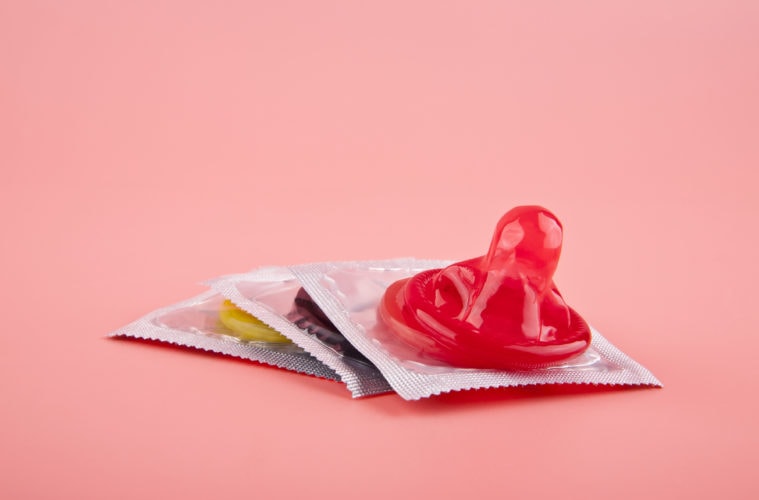Practicing positive and safe sex health is important to help eliminate the transferring of STIs, unwanted pregnancies and other infections, and, thanks to science, there’s a better way people can be doing it. That’s right, scientists have discovered a way to make self-lubricating condoms that simply get lubed up immediately after skin contact, so we should all rejoice this breakthrough invention.
For any and all of those people out there who swear off condoms because they hate the way it makes sex feel, or are inconvenient to slip on when you’re horny and in the mood, these self-lubricating condoms can hopefully help change your mind. Sure, they’re designed much like ordinary condoms — made of latex and a durable coating — but thanks to the self-lubrication, the new condom is supposed to make things easier for the user, as well as providing more comfort.
The condom, which is back by the Bill and Melinda Gates Foundation, say that, once the self-lubricating condom comes in contact with body fluid, it releases a slimy substance, capable of withstanding at least 1,000 thrusts without losing its slipperiness.
One of the researchers on the project, Professor Mark Grinstaff from Boston University, had this to say about the helpful sex health condom:
“It feels a bit slimy when you handle it dry, but in the presence of water or natural fluids it becomes really slick. You only need a little bit of fluid to activate it.”
In a clinical trial, where researchers asked a group of volunteers to rate several types of condoms in terms of slip and slide, the self-lubricating one was rated higher than its competition. However, researchers understand that more tests are necessary to see how the general public responds to the new self-lubricating condom, with couples becoming the future target by early next year.
Is a self-lubricating condom really better for sex health?
In short, yes. According to Dr. Nicola Irwin from Queen’s University, per BBC.com, similar “hydrophilic” coatings have been used in urinary catheters to improve comfort.
“These coated catheters are, in general, associated with a greater degree of user acceptability than the alterative uncoated and gel-lubricated devices. This user preference is mainly due to the reduced levels of discomfort upon insertion, together with the ease of handling and convenience of ‘ready-to-use’ hydrophilic-coated catheters. It may be expected that the newly developed hydrophilic-coated condoms could afford similar benefits, but we need more trials.”
With all this innovation in condom design, Bekki Burbidge, who’s from a sex health charity called FPA, welcomes the new research and data into making sex safer.
“We welcome new innovations to encourage condom use. Condoms are the only method of contraception that also help to protect against STIs, so it’s important that people feel confident and comfortable using them. Lubrication can make sex more comfortable and enjoyable so we encourage people to try out different water-based lubricants as well as different sizes, shapes and textures of condoms to find out what suits them and enhances their sexual pleasure.”
We’ll see what’s next for this self-lubricating condom and when it may be available for people to use themselves, but, if it’s going to make wearing a condom more appealing to help sex health, that’s a positive that many of us should be intrigued by. Plus, it can withstand plenty of sexual intensity, which is a definite positive as well.
(H/T BBC)




